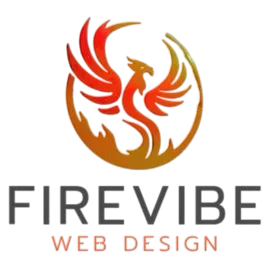
Designing for Conversion: How to Optimize Your Website for Sales
In the digital age, your website isn’t just a place where potential customers learn about your products or services—it’s a critical tool for driving sales and conversions. Designing for conversion involves creating a website that not only attracts visitors but also persuades them to take desired actions, whether that’s making a purchase, signing up for a newsletter, or requesting more information. In this blog post, we’ll explore strategies for optimizing your website to maximize sales and improve conversion rates.
1. Understand Your Target Audience
Before diving into design changes, it’s essential to understand who your target audience is and what they need. Conduct research to identify their pain points, preferences, and behaviors.
Key Steps:
Create Buyer Personas: Develop detailed profiles of your ideal customers, including their demographics, interests, and buying habits.
Analyze User Behavior: Use analytics tools to track how visitors interact with your site, including which pages they visit and where they drop off.
Why This Matters:
Understanding your target audience allows you to tailor your website design to address their needs and increase the likelihood of conversion.
2. Craft a Clear Value Proposition
Your value proposition is the promise of value that your product or service delivers. It should be prominently displayed on your website to immediately communicate what sets you apart from the competition.
Key Elements:
Concise Messaging: Ensure that your value proposition is clear and succinct, highlighting the main benefits of your offering.
Visual Emphasis: Use design elements such as bold typography or contrasting colors to make your value proposition stand out.
Why This Matters:
A strong value proposition quickly captures the visitor’s attention and convinces them of the benefits of choosing your product or service.
3. Design Compelling Call-to-Action (CTA) Buttons
CTAs are crucial for guiding visitors toward taking the next step, whether it’s making a purchase or filling out a contact form. Well-designed CTA buttons can significantly impact your conversion rates.
Best Practices:
Use Action-Oriented Language: Phrases like “Buy Now,” “Get Started,” or “Request a Quote” are more compelling than generic terms like “Submit.”
Optimize Placement: Position CTA buttons strategically where they’re easily accessible, such as at the top of the page, within content, and at the end of key sections.
Ensure Visibility: Use contrasting colors and ample white space to make CTA buttons stand out on the page.
Why This Matters:
Effective CTAs guide users toward conversion actions, making it easier for them to complete desired tasks.
4. Improve Website Load Speed
A slow-loading website can frustrate users and lead to higher bounce rates. Optimizing load speed is crucial for both user experience and conversion rates.
Strategies:
Optimize Images: Compress images without sacrificing quality to reduce page load times.
Minimize Code: Remove unnecessary code and scripts to streamline your website.
Use Caching: Implement caching techniques to speed up page loading for repeat visitors.
Why This Matters:
Faster load times improve user experience, reduce bounce rates, and increase the likelihood of conversions.
5. Ensure Mobile-Friendliness
With a significant portion of web traffic coming from mobile devices, it’s essential to design your website to be mobile-friendly.
Mobile Optimization Tips:
Responsive Design: Ensure that your website layout adjusts seamlessly to different screen sizes and devices.
Touch-Friendly Elements: Design buttons and links to be easily tappable on touchscreen devices.
Simplify Navigation: Use mobile-friendly navigation menus to enhance usability on smaller screens.
Why This Matters:
A mobile-friendly website provides a better user experience for mobile visitors, increasing the chances of conversion.
6. Utilize High-Quality Visuals
Visuals play a significant role in capturing attention and conveying your brand’s message. High-quality images and videos can enhance user engagement and drive conversions.
Visual Tips:
Use Professional Images: Invest in high-quality, professional images that reflect your brand’s identity.
Incorporate Videos: Use videos to showcase products, explain services, or share customer testimonials.
Why This Matters:
High-quality visuals enhance the overall appeal of your website, build trust with visitors, and encourage them to take action.
7. Optimize for Trust and Credibility
Building trust with your visitors is crucial for converting them into customers. Your website should communicate reliability and credibility.
Trust-Building Strategies:
Display Testimonials: Showcase positive customer reviews and testimonials to build social proof.
Include Trust Badges: Display security badges, payment icons, and industry certifications to reassure visitors.
Provide Clear Contact Information: Ensure that your contact details are easily accessible to address any concerns.
Why This Matters:
Establishing trust helps to overcome objections and encourages visitors to feel confident in making a purchase or providing their information.
8. Test and Refine Your Design
Continuous testing and refinement are key to optimizing your website for conversions. Regularly assess your design and make data-driven improvements.
Testing Methods:
A/B Testing: Compare different versions of your web pages to determine which design elements perform better.
Heatmaps: Use heatmaps to visualize where users click and interact with your site.
User Feedback: Collect feedback from users to identify areas for improvement.
Why This Matters:
Ongoing testing and refinement help you stay aligned with user preferences and ensure that your website remains effective in driving conversions.
Conclusion: Designing for Conversion
Designing a website that drives sales and conversions involves a strategic approach to understanding your audience, crafting compelling messages, and optimizing key elements. By implementing best practices for CTAs, load speed, mobile-friendliness, and trust-building, you can create a website that not only attracts visitors but also converts them into loyal customers.
At FireVibe Web Design, we specialize in creating high-converting websites that deliver results. Whether you’re launching a new site or looking to improve an existing one, our team can help you design a website that maximizes sales and achieves your business goals. Contact us today to learn more about our web design services and how we can help you succeed.
